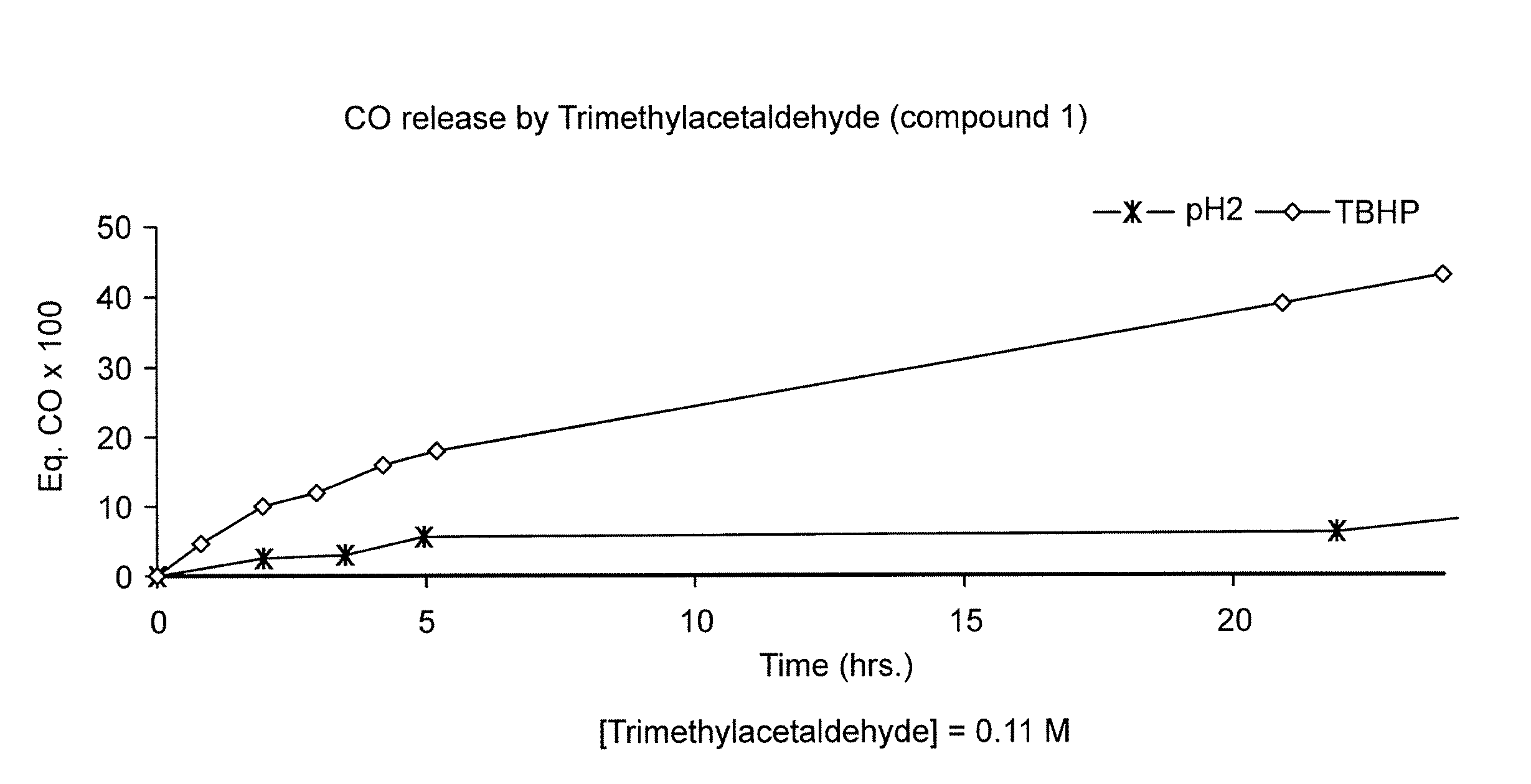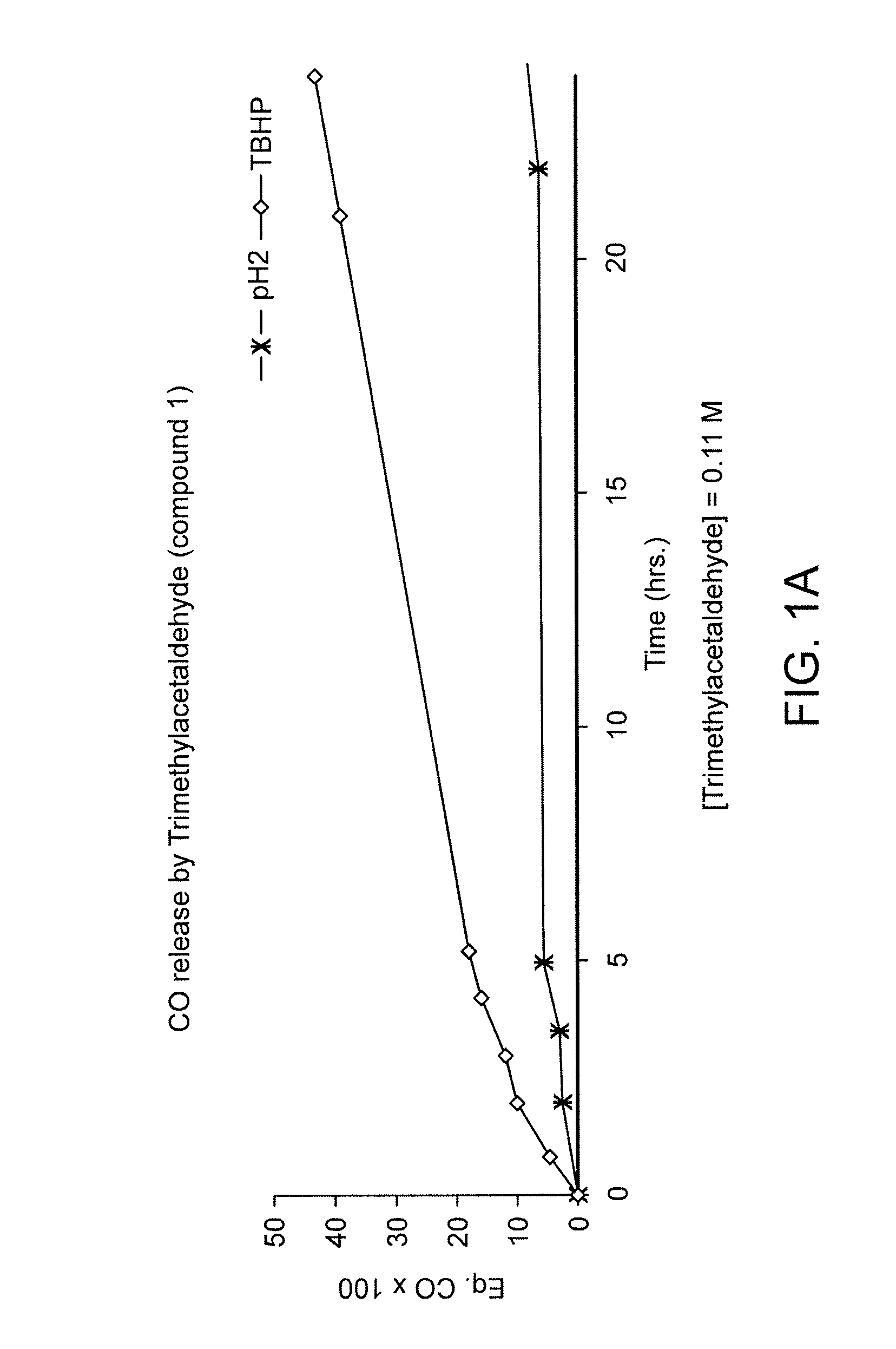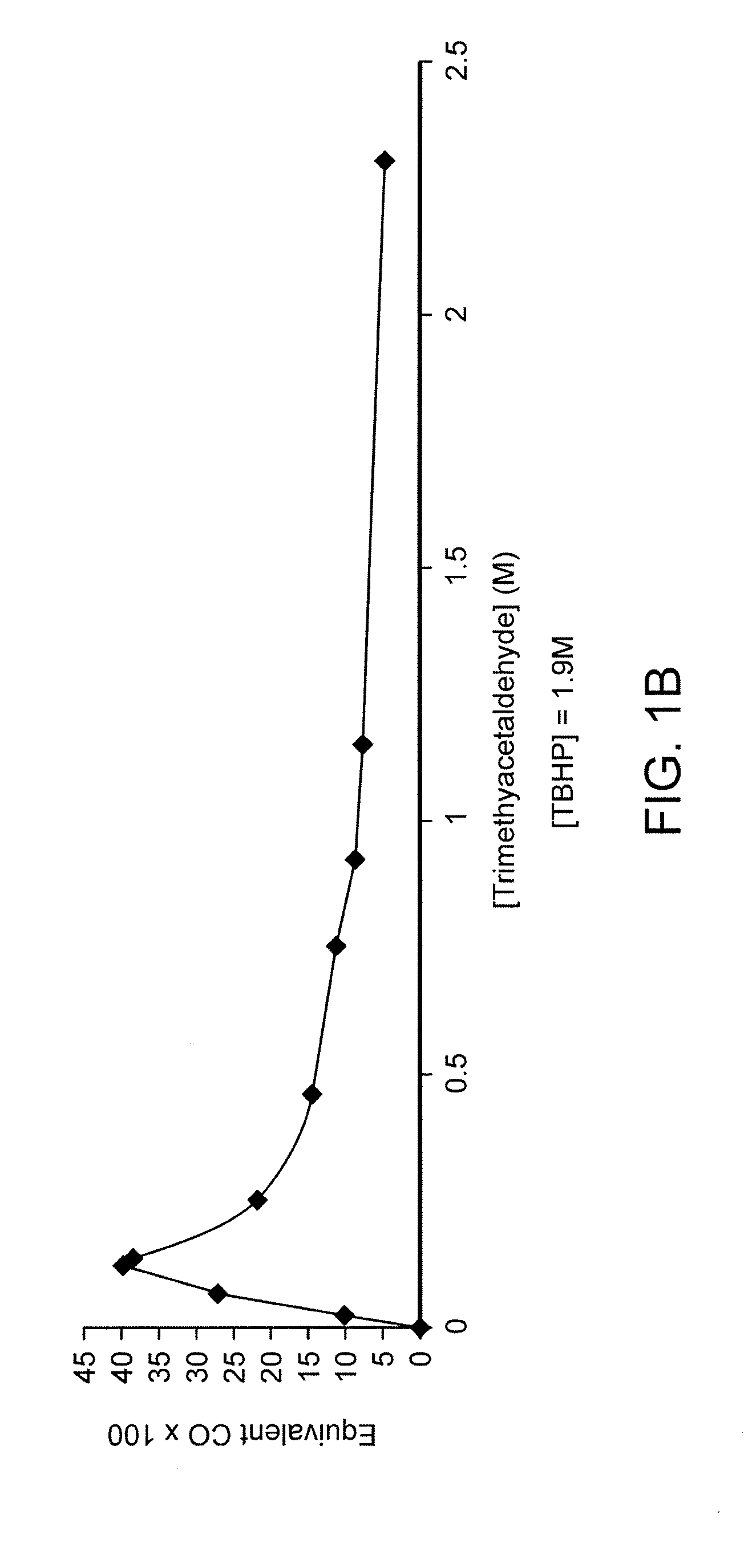Methods for treating inflammatory disease by administering aldehydes and derivatives thereof
a technology of inflammatory disease and aldehyde, which is applied in the direction of iron organic compounds, drug compositions, peptides, etc., can solve the problems of chronic pathological conditions associated with pain and functional impairment of affected tissues, limited use of these drugs, and inability to solve inflammation. , to achieve the effect of improving in vivo stability, bioavailability and/or delivery
- Summary
- Abstract
- Description
- Claims
- Application Information
AI Technical Summary
Benefits of technology
Problems solved by technology
Method used
Image
Examples
example 1
CO Release from Trimethylacetaldehyde (Compound 1) in Different Media
[0119] A sample of commercially available (e.g., from Aldrich) trimethylacetaldehyde (compound 1) was placed in a 7.5 ml vial and then sealed with an appropriate stopper. In each experiment 2 ml of the appropriate solution, TBHP, H2O2, rpmi or pH 2 solution, was added and the vial placed at 37° C. with orbital stirring.
[0120] At the appropriate time, 250 μl of the gas mixture was removed from the vial, injected in the gas chromatograph (Trace GC with a TCD detector from Thermo Finnigan, connected to a Chrom-card 32 bit software), and the amount of CO was measured according to previously calibrated conditions.
[0121] As shown in FIG. 1, trimethylacetaldehyde released CO in TBHP solution, and very little in acidic aqueous solution. In both cases, the CO release was inhibited by the addition of a radical trap, 2,6-di-tert-butylphenol, thus confirming a radical decarbonylation mechanism. FIG. 1A shows CO release from...
example 2
CO Release from 2,2-dimethyl-4-pentenal (Compound 2) in Different Media
[0123] A sample of the commercially available (e.g., from Aldrich) 2,2-dimethyl-4-pentenal (compound 2), was placed in a 7.5 ml vial and sealed with an appropriate stopper, and the experiments were performed as described above in Example 1.
[0124] As shown in FIG. 2, 2,2-dimethyl-4-pentenal (0.16 M) released CO in the TBHP solution, very little at pH 2, and even less in rpmi. No CO release was observed in H2O2 solution.
example 3
CO Release From 4-ethyl-4-formyl-hexanenitrile (Compound 3) in Different Media
[0125] A sample of the commercially available (from Acros Organic) 4-ethyl-4-formyl-hexanenitrile (compound 3), was placed in a 7.5 ml vial and sealed with an appropriate stopper, and the experiments were performed as described above in Example 1.
[0126] As shown in FIG. 3, 4-ethyl-4-formyl-hexanenitrile (0.15 mM) released a very high amount of CO in TBHP, less at pH 2, and even less in rpmi. No CO release was observed in H2O2 solution.
PUM
| Property | Measurement | Unit |
|---|---|---|
| Fraction | aaaaa | aaaaa |
| Fraction | aaaaa | aaaaa |
| Fraction | aaaaa | aaaaa |
Abstract
Description
Claims
Application Information
 Login to View More
Login to View More - R&D
- Intellectual Property
- Life Sciences
- Materials
- Tech Scout
- Unparalleled Data Quality
- Higher Quality Content
- 60% Fewer Hallucinations
Browse by: Latest US Patents, China's latest patents, Technical Efficacy Thesaurus, Application Domain, Technology Topic, Popular Technical Reports.
© 2025 PatSnap. All rights reserved.Legal|Privacy policy|Modern Slavery Act Transparency Statement|Sitemap|About US| Contact US: help@patsnap.com



